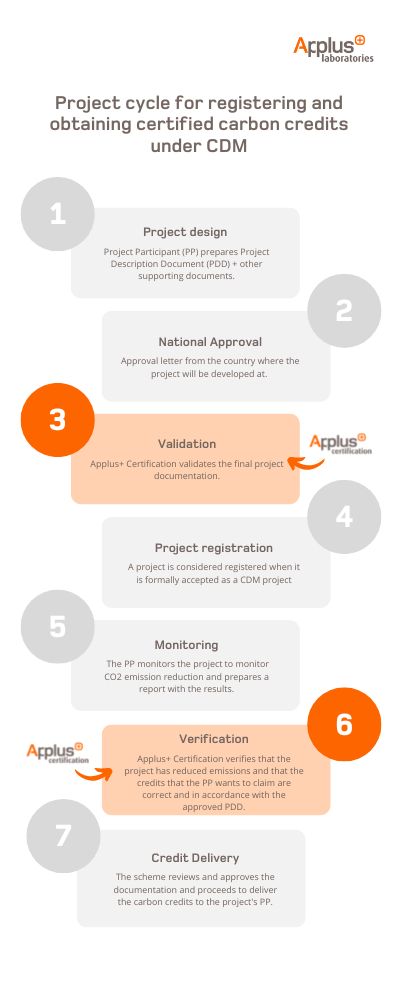Certified carbon credits: what are they & how to generate them under the CDM scheme
The reduction of CO₂ emissions is one of the greatest challenges for countries and companies worldwide. As a means to alleviate the environmental damage, the United Nations Organization has consolidated a strategy through certified carbon credit projects (CCCs). This initiative mitigates environmental damage while beneficiating companies that reduce their carbon emissions.
How can companies start registering their projects to become certified carbon credit generators? The first step is registering a project whose technology and methodology allow either the absorption of atmospheric CO2 or a means to avoid the emission of CO2 into the atmosphere.
A CCC project can be registered under various national and international schemes, among these, the Clean Development Mechanism (CDM). So, how must the registration and obtention of certified carbon credits be carried out? What are the benefits it can bring about for the project promotor? Keep reading, our publication is sure to help you clear your doubts on this matter.
What is a certified carbon credit?
Also known as carbon credits, certified carbon credits can be defined as the unit equivalent to one ton of CO₂ that is either absorbed or avoided in the atmosphere.
This climate finance instrument is a result of international agreements on climate change and emissions reduction. Its purpose is to incentivize low-carbon economic models and in turn, help public or private entities meet their emission reduction targets.
How to obtain certified carbon credits?
As we mentioned previously, CCCs can be obtained through the implementation and registration of projects whose technology and methodology allow the absorption or help avoid the emission of CO₂ into the atmosphere.
There are several national and international schemes that CCC projects can be registered under and they each have their individual implications.
The type of projects that apply can vary. They could be, for example, renewable energy projects that generate energy from renewable sources, such as the wind or sun, that don't depend on fossil fuels and lower overall CO₂ emissions.
The specific characteristics of these projects depend on the methodology employed, a factor that must be previously approved by the scheme under which the project is to be registered. Each scheme has its own criteria, and its value varies in the voluntary carbon market.
Keep reading to get in depth about the Clean Development Mechanism, one of the oldest and most internationally recognized schemes.
What is the Clean Development Mechanism?
As part of our commitment to environmental certifications and sustainability, Applus+ Certification is an accredited entity with the widest scope of validation and verification of carbon credit generating projects worldwide (under sector scopes 1, 3, 13).
This competitive advantage allows us to support companies during key stages of the Clean Development Mechanism (CDM) project cycle. A scheme that’s aligned under two main objectives:
- To serve as a tool that helps developed countries commit to their emissions reduction targets.
- To promote sustainable development in developing countries.
CDM Benefits
In addition to generating certified carbon credits and brand reputation improvements, a project registered under the CDM scheme could generate positive social, economic, technological and environmental impact.
Some of these benefits include:
- Promoting investment in mitigation projects in developing countries.
- Incorporating technology advancements in the country where the project will be implemented at.
- Socio-economic enhancements to nearby communities: new jobs and an increase in local economic activity
- Environmental improvements, since these projects aim to reduce greenhouse gas (GHG) emissions.
Project cycle under the CDM scheme
The designated operational entities, known as DOE (Designated Operational Entity), are in charge when it comes to performing the independent evaluation of the project and the relevant documentation to validate that it complies with the CDM standards and procedures.
Applus+ Certification plays an essential role as an accredited DOE during validation and verification stages. But in order for you to get a better understanding of the whole process, we’ve compiled a brief summary of all the different stages of the CDM scheme project cycle.

Registering a project under the Clean Development Mechanism to start generating certified carbon credits can bring countless benefits. If you are interested in climate finance and the carbon credit market, Applus+ Certification's environmental certification services can provide you with the support you need.